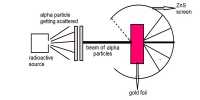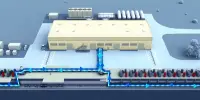Venus’s surface is hostile, and that is an understatement. The temperature is high enough to melt lead, the pressure is twice what it would be at the bottom of Lake Superior, and there are several acids in the air. However, there are clouds above this hostile environment that are somewhat more tolerant of any robotic probes we may send. The test flight of an aerobot that might one day accomplish that was flawless.
The idea behind the mission is to use a robotic balloon in conjunction with an orbiter to operate far above the planet. The aerobot will traverse the clouds at a distance of 12 meters (40 ft). Over Nevada’s Black Rock Desert, a third scaled version has been tested from a height of one kilometer (4,000 feet). It twice took to the skies 55 kilometers (180,000 feet) above Venus’ clouds in conditions akin to those it might experience.
“We’re overjoyed with the prototype’s performance. It was launched, displayed controlled-altitude maneuvers, and was successfully recovered after both flights, according to robotics technologist Jacob Izraelevitz, who is in charge of the balloon’s development at NASA’s Jet Propulsion Laboratory (JPL).
We’ve gathered a wealth of information from these flights, and we’re eager to use it to enhance our simulation models before visiting our sister planet.
On the Vega 1 and Vega 2 missions in 1985, the Soviet Union launched two balloons toward Venus. They persisted for just about two days. Ideal duration for the aerobot would be at least 50 times longer. It would investigate atmospheric vibrations for potential venusquakes as well as its chemical composition, perhaps offering a conclusive solution to the phosphine conundrum of life on Venus.
Aerobot research colleague Paul Byrne said, “The success of these test flights is a significant deal for us: We’ve successfully shown the technology we’ll need for investigating the clouds of Venus.” Byrne is an associate professor at Washington University. These experiments lay the groundwork for long-term robotic exploration above Venus’ fiery surface.
A balloon within another balloon is the aerobot. The inside one is stiff and contains pressurized helium. The quantity of helium pumped between the two or back into the inner one will determine how much the flexible outer one can expand and compress. This would enable the mission to be maneuvered at an altitude of 52 to 62 kilometers (about 171,000 and 203,000 feet).
The type of substance used is crucial. Even though the conditions in Venus’ clouds are better than those on the surface, they are nonetheless very exposed to sunlight and other corrosive substances. The prototype is constructed from cutting-edge materials that work well in these circumstances. Although the mission has not yet received approval, with such a technical show, this may soon change.
Scientists and engineers from NASA’s Jet Propulsion Laboratory and the Near Space Corporation in Tillamook, Oregon, created the aerobot prototype.















